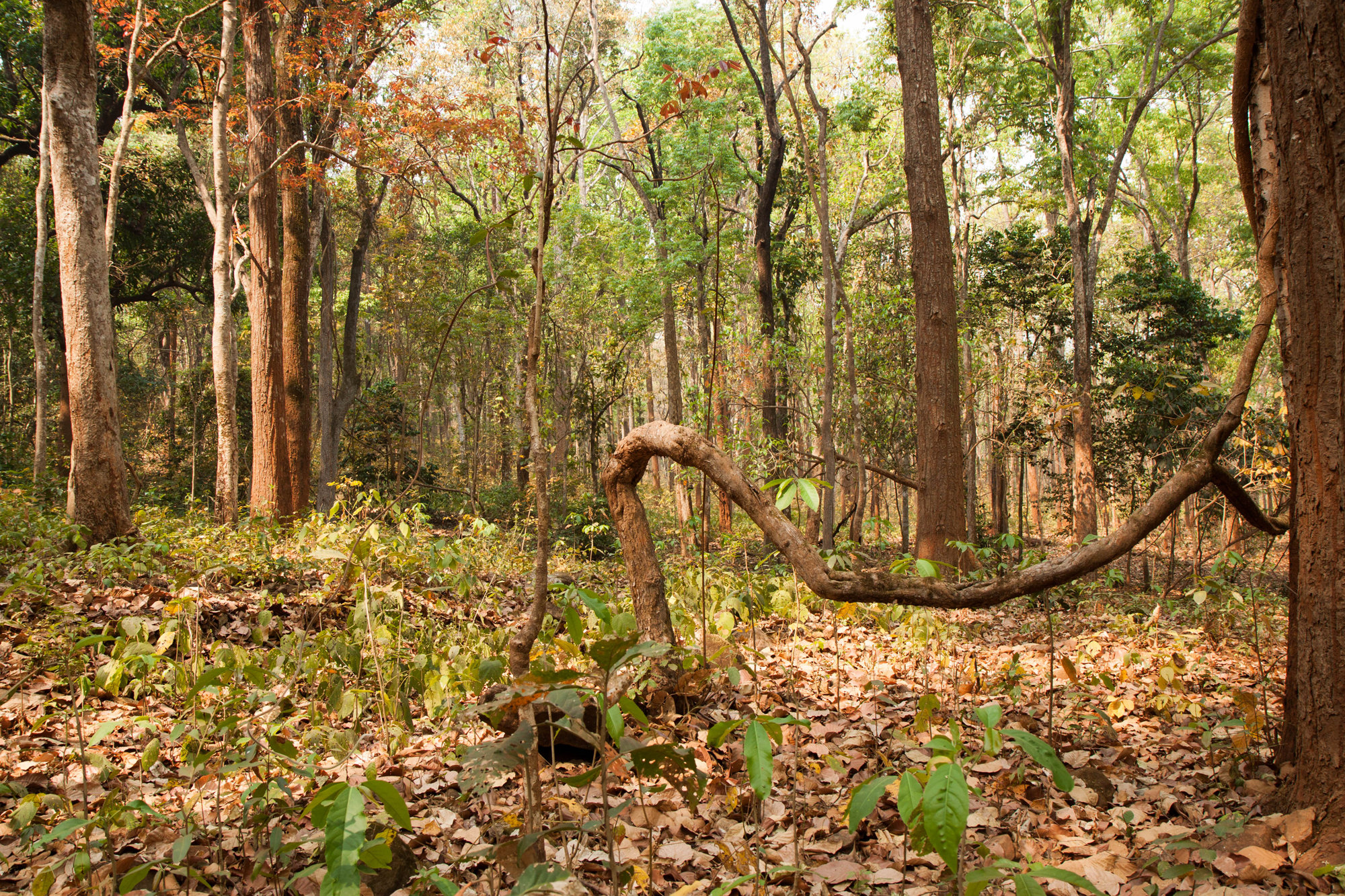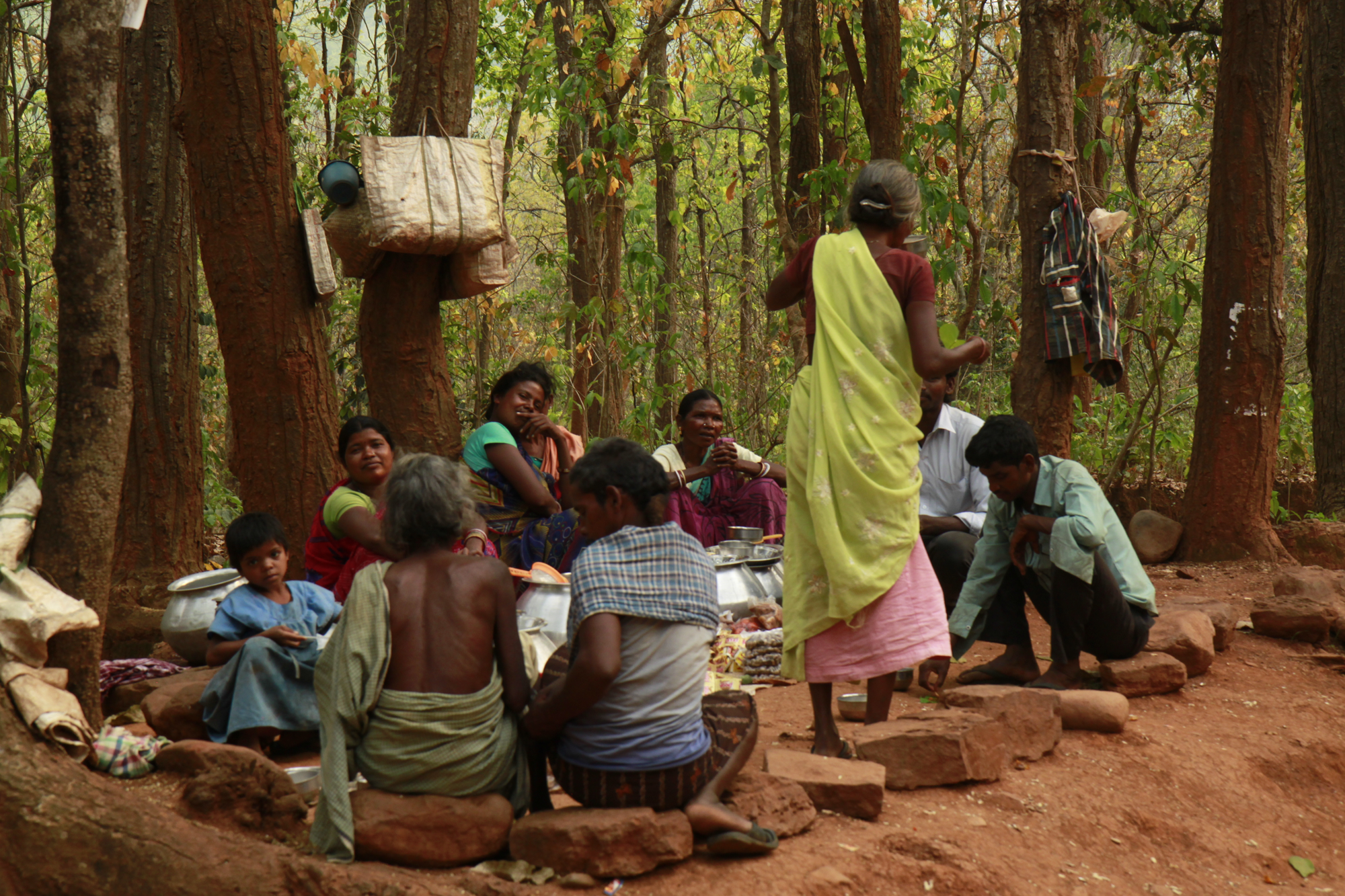by Eleonora Fanari
Sita Maji of the Santhal tribe sits in front of her temporary house in Munda, Mayurnbanj district of Odisha, India. She lives with her two children, one and three years old, along with her husband and her old mother. In the hot May weather of 45 degrees, this small house is the only escape for her family of five—70 km away from her ancestral village in Kabathgai, from where she was forcefully relocated by the Forest Department on May 28 2016.
Kabathgai was a village located in the core area of the Simlipal Tiger Reserve, one of the biggest and most recognized tiger reserves in the East Indian state of Odisha. While the home of many tigers, Simlipal has also been home to numerous tribal communities such as Santhal, Kolho, and Khadia, which have inhabited these lands for centuries.
The red silk cotton trees of semul flowers, which give the name to the Simlipal National Park, have been the house, the shadow, and companionship to tribal people like Sita. But today to respond to the need for environment conservation, in Simlipal, as well as in many other Tiger Reserves of India, many villages have been relocated outside the forest area, because they are considered a threat to the wildlife and the conservation of the tigers. No longer considered the protectors of the forest, they have been targeted by the government and the wildlife “experts” as encroachers.
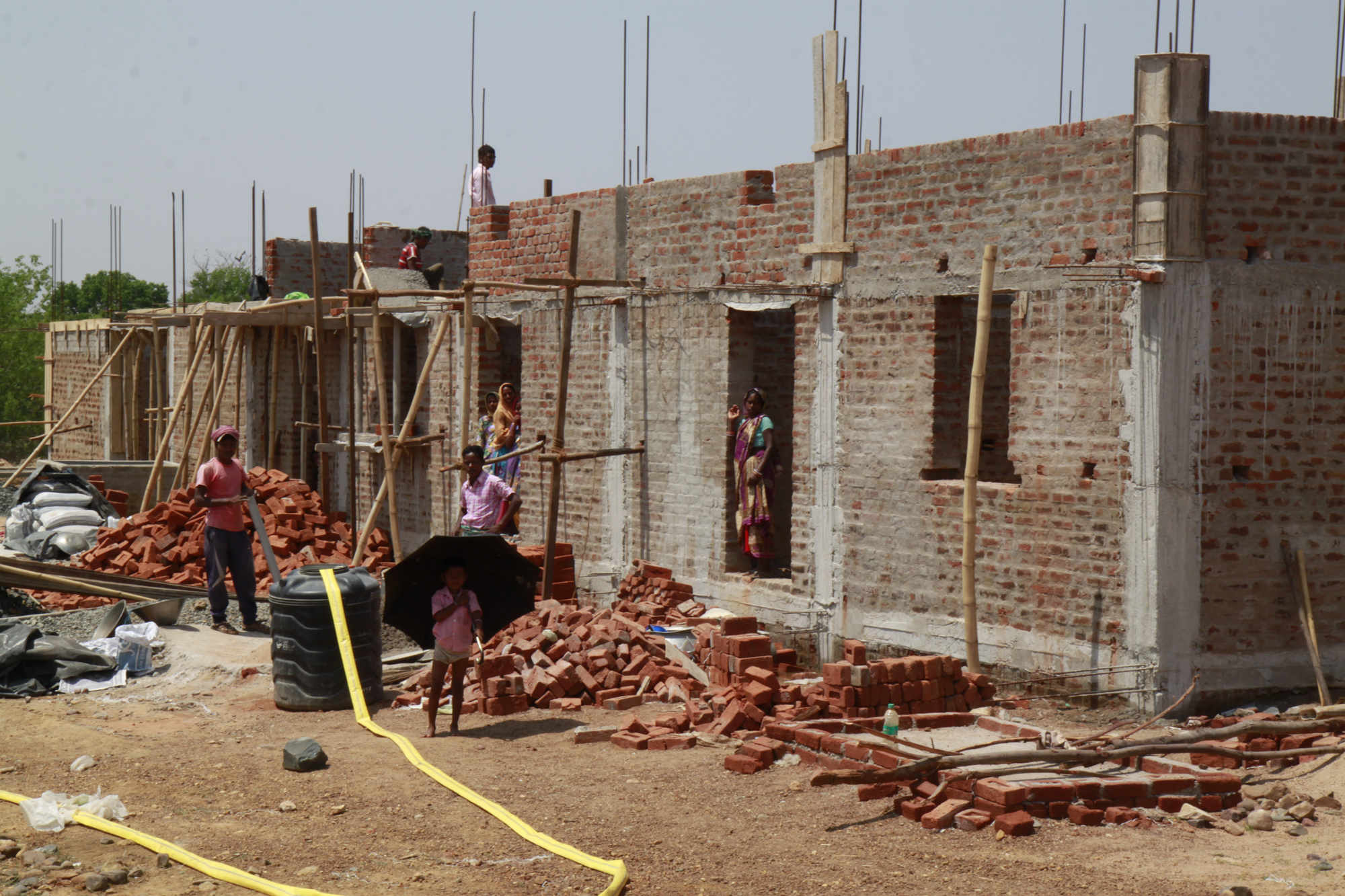
The relocation
The relocation of Kathbagai village has been planned after the notification of the new Critical Tiger Habitat (CTH) in Simlipal Tiger Reserve. The critical tiger habitats (CTHs), also known as core areas of tiger reserves, are identified under the Wild Life Protection Act (WLPA), 1972, based on scientific evidence that “such areas are required to be kept as inviolate for the purpose of tiger conservation.” The term “inviolate” has mostly been interpreted as “free of human presence”. However, in many parks all over India, the demarcation of CTHs coincides with areas inhabited by numerous human settlements.
The Santhal village of Kabathgai fell under the demarcation of the new core tiger area in Simlipal, announced in December 2007. For this reason Sita’s family was relocated, as her family was considered dangerous for the wildlife conservation and for the protection of the tigers.
With a yellow bright sari, and a tired expression, Sita is resting after a morning of hard work of building up her new houses in the relocated Munda place. She tells me how difficult their life has been since the relocation: “Out of the forest everything needs to be purchased from the market, and after the relocation the forest department helped us with only 1 kg rice per person for the first 3 months. The food available here is of bad quality and we are suffering from bad health issues”. Sita explains about the conditions at the site of relocation, but her eyes glimpse only when she tells about her forest, remembering those days when their children could play freely on the ground, and the women used to rest under the big shading trees.
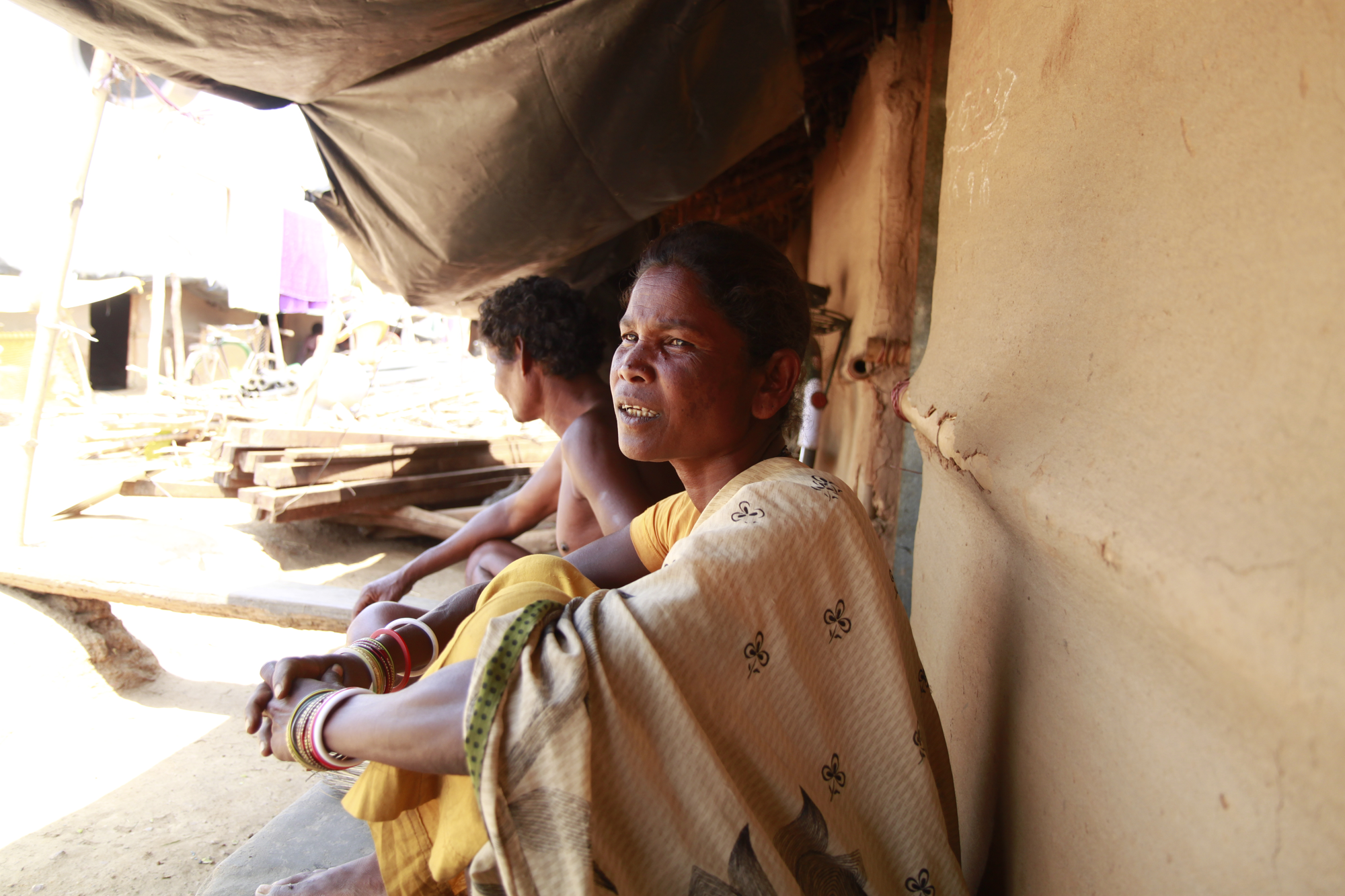
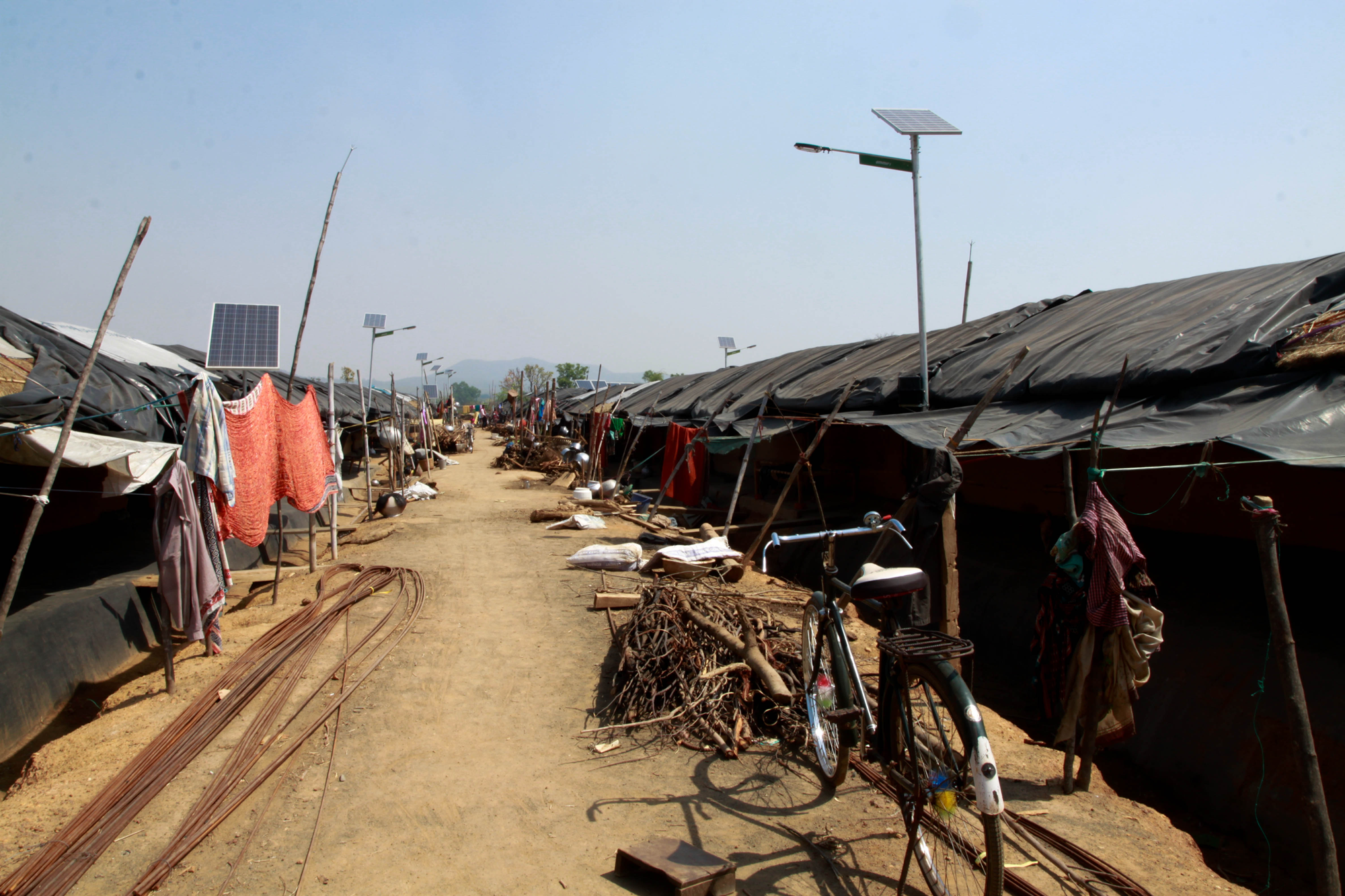
The relocated site is still a temporary camp, where a row of mud houses has been covered by plastic black tents that function both as shade and protection for the rain. Firewood and kitchen utensils are spread throughout the house’s lane where cooking, sleeping and washing clothes take place in the same narrow area. Electricity is still not available and a water pump and one temporary toilet have been considered to be enough for the entire community of 47 families.
“Here it is very hot. Without any trees, rivers and lands we feel lost! We are not used of living in such an environment and in the hot summer, we are suffering from lots of sicknesses and many people have been already carried to the hospital because of dehydration” says Sita Maji.
For two months the entire community have been working to build up their houses of about 10×8 feet per family, under the MGNREGA (Mahatma Gandhi National Rural Employment Guarantee Scheme), a National scheme aiming at enhancing the livelihood security of people in rural areas.
After the construction is finished they will need to take some other wage labour from outside in order to survive.
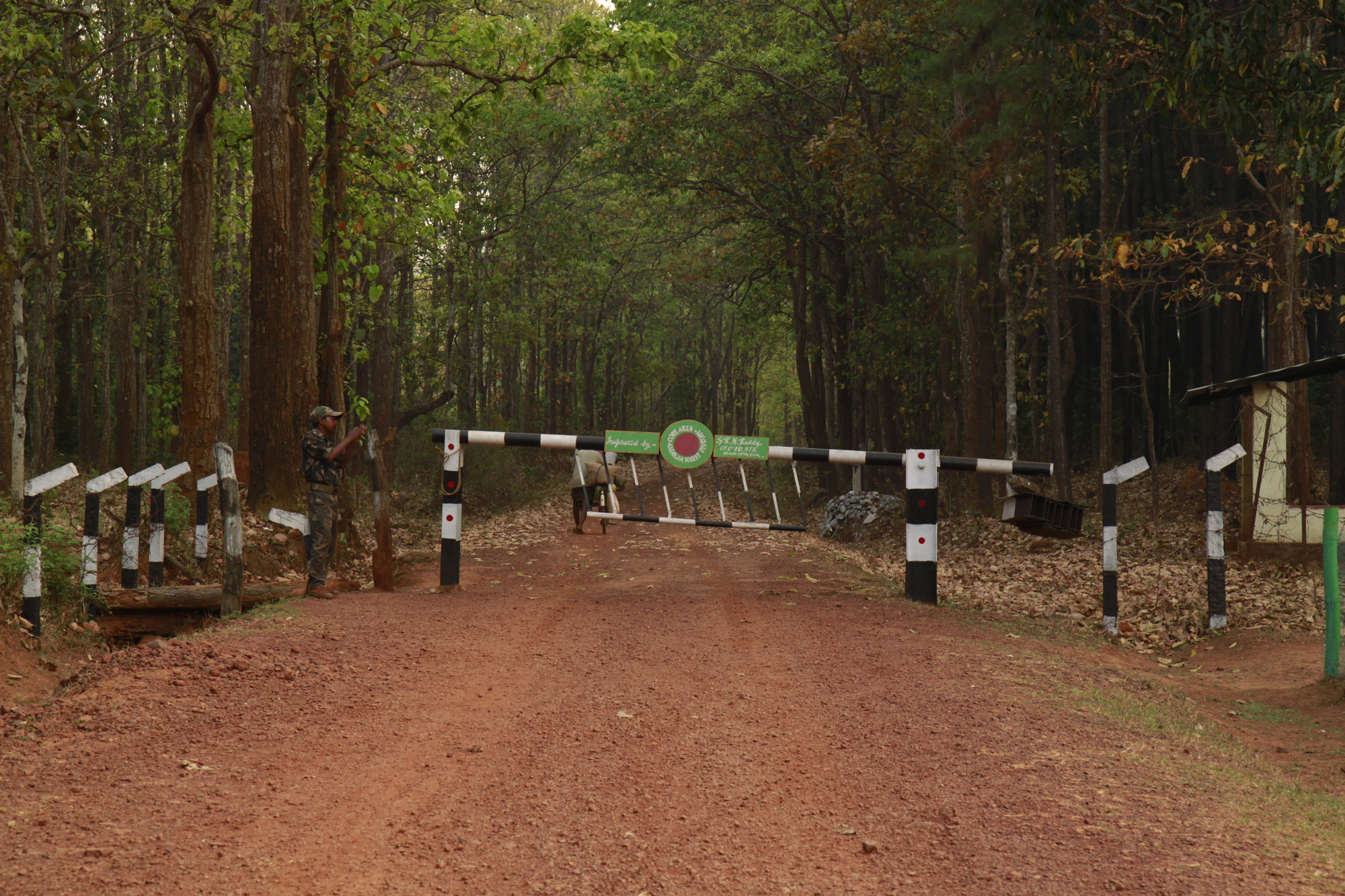
The tribal people: puppet of the legal regime
The Scheduled Tribes and Other Traditional Forest Dwellers (Recognition of Forest Rights) Act, or the Forest Rights Act, (FRA) 2006 is the legal instrument that recognises the rights of Sita to inhabit the forest area and to carry on her traditional activities.
The FRA is a milestone act with the aim of restoring the traditional and customary rights of the tribal and the forest dwellers’ communities that have historically been denied and exploited by the colonial forest governance. Prior to the FRA, entire communities living inside protected areas were denied entitlements on their forest land, and always threatened by eviction due to being considered illegal in their own territory. Other forest entitlements such as grazing, fishing, collecting of minor forest products (MFPs) were also denied. Thus the FRA is a piece of legislation that gives hope to all the forest dwellers in India.
Sita’s family have struggled for many years to obtain the piece of paper that could allow them to live in peace, cultivate the land, carrying on their activities in the forest and finally enjoy the legal rights which they have previously been denied. After a long struggle, Sita’s community got their community title in 2015, but they were forced to relocate just after. “We fought for our land and for our children, but the pressure put on us by the forest department was unbearable, and we had to come out to find a bit of peace,” says Sita remembering the day they got pushed out of their forest.
“People living in the Kabataghai village in the core tiger zone were forced continuously to relocate by the forest department. Department also sent middle-men to lure village residents into accepting the compensation package, lying that it is a one-time opportunity” says Sanghamitra, a member of Community Forest Rights Learning and Advocacy, a group of activists from across India advocating the FRA. She has been working closely with the Tribespeople living in the core zone of Simlipal.
According to the FRA, the people can be relocated by the Critical Tiger Habitat only if non-coexistence with wildlife have been proved through scientific studies, and only after the voluntary and written consent of the gram sabha (the elder’s council). The people of Kobathgai were never keen to be relocated. In the middle of the winter, Sita’s family had to leave their ancestral land. The entire colony was moved with trucks to this desolate piece of land close to the main city of Jashipur. “In that same day our houses were turned apart, our cropped land destroyed by elephant and our community villages took over by the authorities,” explains Sita, remembering that day which is still very fresh in her memory.
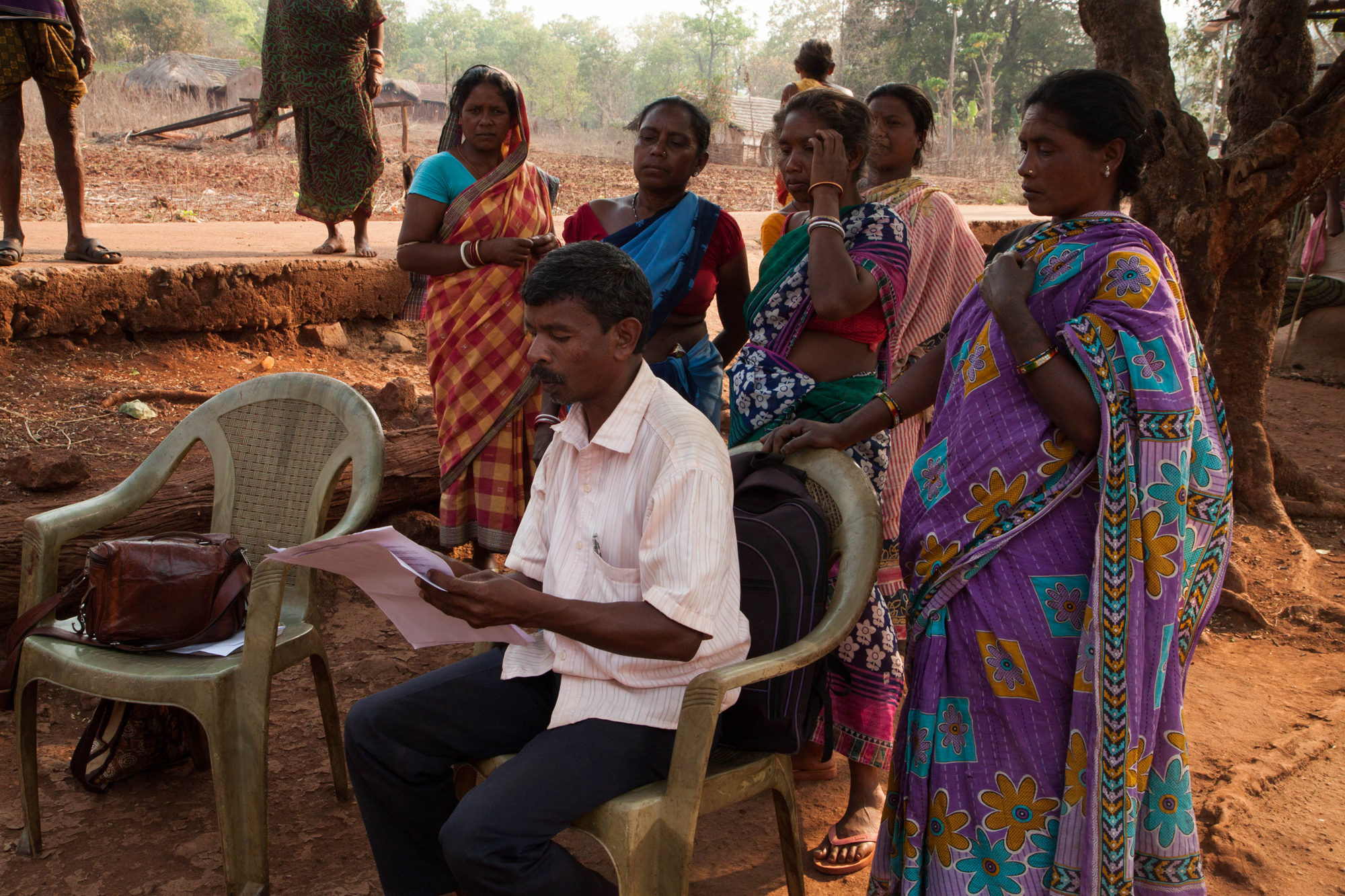
When the District Collector of Mayurbhanj, who is responsible for the relocation of the people, was asked if the relocation was forced he absolutely argued that all relocation have been voluntary. But is continuous harassment, destruction of crops, and physical and mental torture considered normal behavior by the Forest Department, who instead should have cooperated with the villagers and recognized their granted rights as per FRA.
With a package of 10 lakh rupees (US$15,000) and a false promise of land, the Kabathgai community had no option but relocation.
The rights recognized under the Forest Rights Act are now expired, according to the District Collector, and people are not anymore able to go back to their ancestral land, pursue their traditional activities, and to collect the MFPs for their livelihood. Landless and helpless, the people of Kabathgai are yet to realize how to survive out of the forest. The men seem to show more strength and hope about a new modern life, while the women are feeling the frustration and the fear of a life not corresponding to their needs.
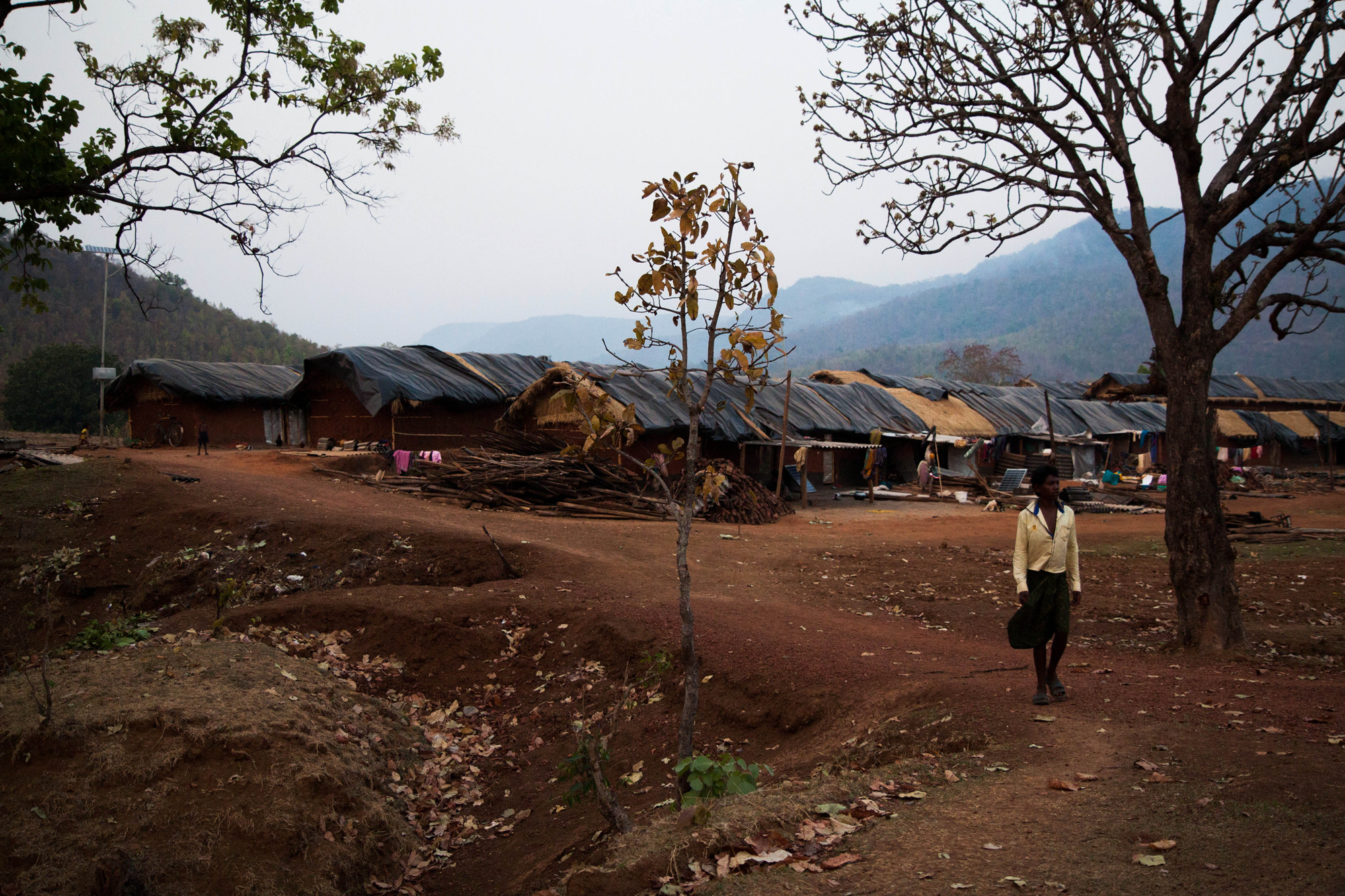
An ongoing struggle
Sita’s community is not the only one which has been forcefully evicted by the forest department disregarding FRA 2006. In the same Simlipal Tiger Reserve, since 20094 villages, 3 from the core tiger area and 1 from the buffer zone, have been already moved out of the forest. Conflicts between state forest departments and Indigenous people are being reported across the protected areas of the country. According to a report on displacement due to conservation published by the environmentalist A. Kothari, in the last 30 years a number between 100,000 to 300,000 people have been displaced in the name of conservation.
In Kanha Tiger Reserve more than 700 families of the Baiga tribe have been displaced since 1970. In Nagarhole National Park and Tiger Reserve a number of 3,400 families got displaced without any proper compensation and relocation; in Kaziranga in the state Assam a 2015 high court order has ordered the eviction of more than 2,000 forest dwellers inhabiting the area, among which many are Mising tribal people, Adivasis and Bengali minorities.
The Forest Rights Act continues to be ignored by the authorities which carry on with illegal evictions in the name of conservation.
A recent circular issued by the National Tiger Conservation Authority (NTCA), the government body that looks after the managing of the tiger reserves for the conservation of the big cat, ordered that ‘no forest rights under FRA should be anymore granted inside the CTH’. This means the annulment of rights for forest dwellers like Sita, whose traditional livelihoods are dependent on their ability to collect MFPs.
The order could indeed seriously aggravate the situation on the ground. Tribespeople who have been fighting for their rights in the forest even after the FRA being in place are now compelled to come together to fight against the NTCA’s order.
The conflict arising in the name of biodiversity conservation has been increasing in India as well as in many other part of the world. In the name of conservation today many communities are getting relocated and deprived of their means of survival without properly ensuring them any livelihood option and without any engagement in the real meaning of conservation.
Today conservation is just another name used as a justification for territorialism.
The positive connotation given to conservation is being used to hide the negative words of dispossession, land acquisition, and denial of rights. It is under this name that Sita’s family was relocated from her village, last year during the monsoons without proper shelter or facilities, and with only the support of a few kilos of rice. “We could not sleep at night and the children were constantly crying. We are now working day and night in the hot weather to finish the construction of the house before the new monsoon season starts, but after this who knows what our destiny will be,’ argues Sita.
While pronouncing these words she turns towards the empty space, and then looking at me she says: “We were before the protectors of the forest, now they turn us into its enemy!”
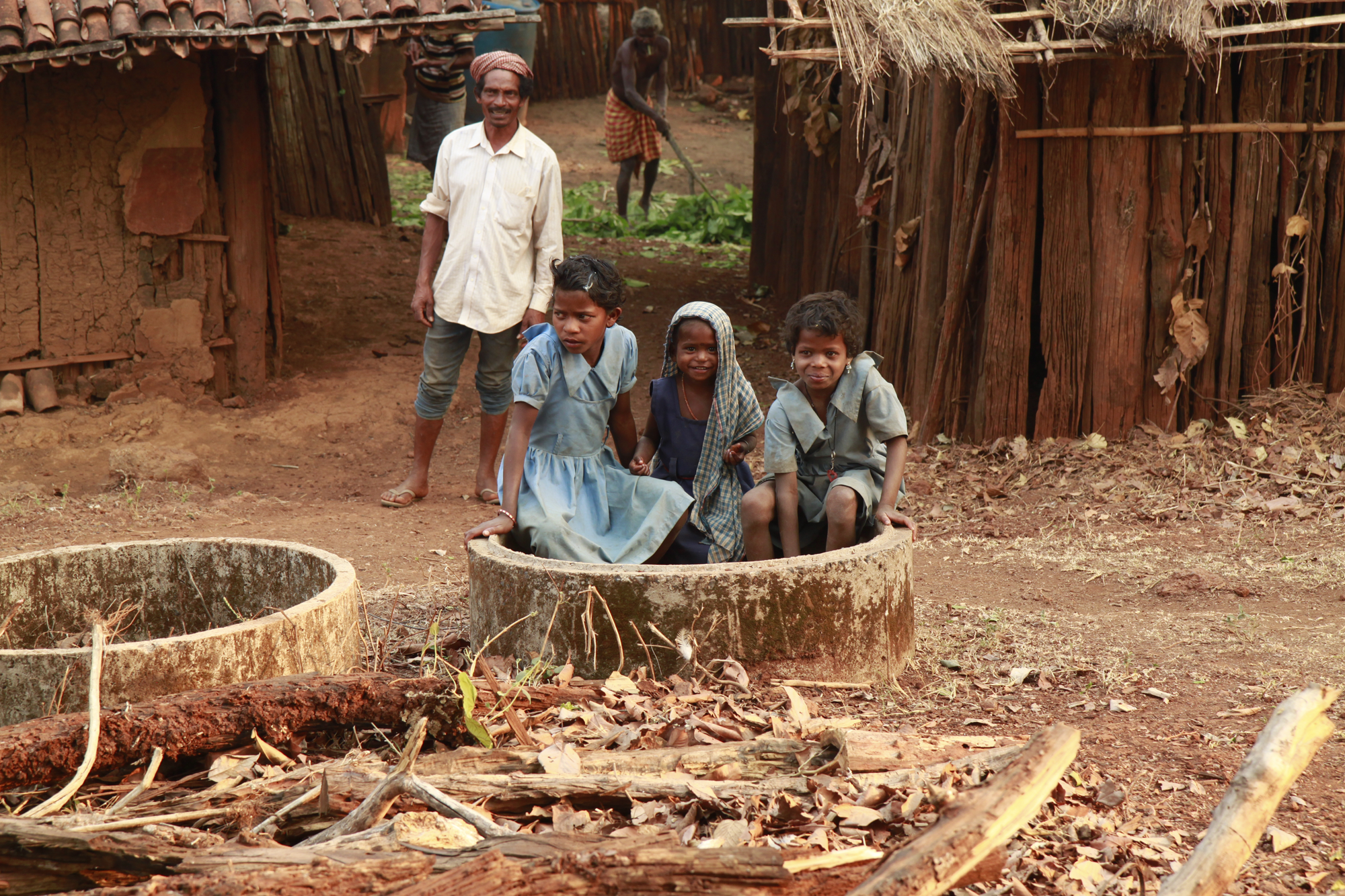
All photos by Eleonora Fanari
Eleonora Fanari is a researcher currently based in New Delhi. She has been working on the issue of social exclusion, minorities, and land rights in collaboration with several non-governmental organizations. She is currently associated with Kalpavriksh, a non profit organization working on environmental and social issues, where she is carrying on research on conservation and tribal rights in protected forest areas. She blogs here.
